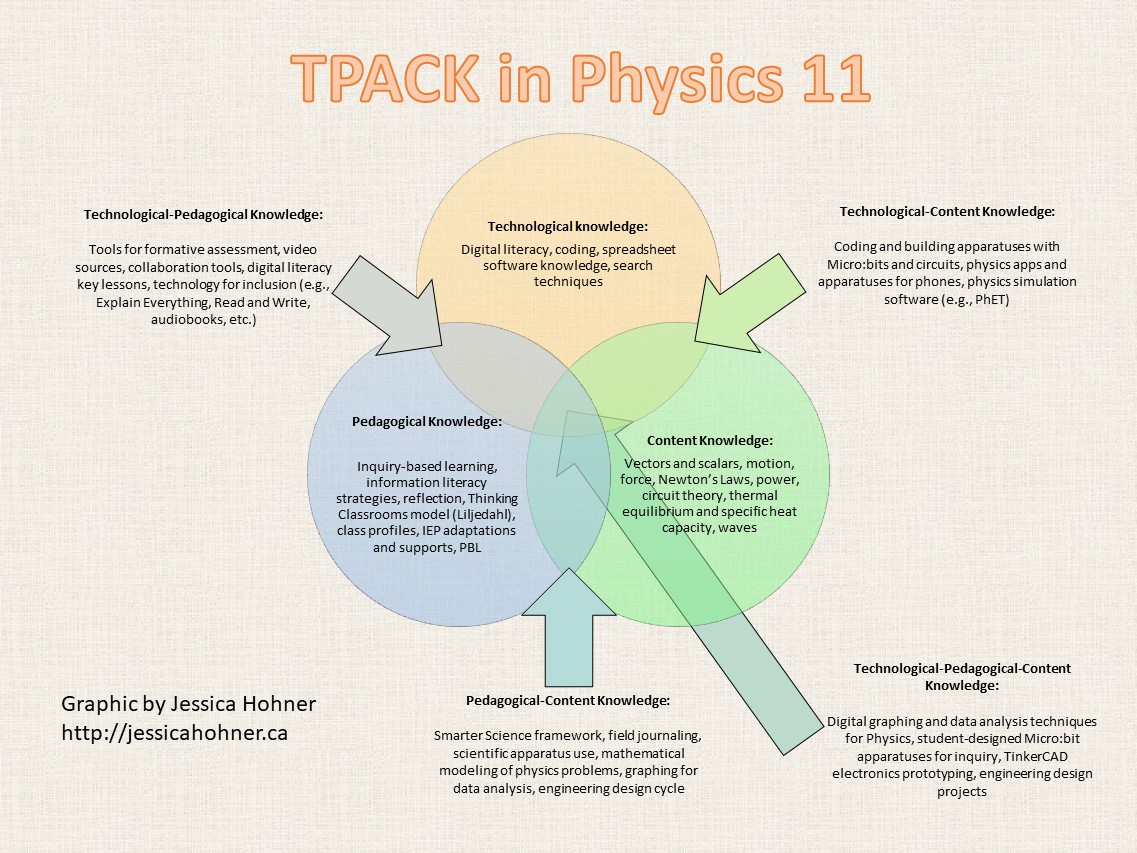
Never let it be said that I am a great graphic designer. This is another assignment for my Teacher-Librarian coursework. I found this assignment interesting because I’ve never taken the time to split up my knowledge area in this way before.
I feel like secondary science and math tend to not make abundant use of the library, probably because a lot of science teachers associate the library with humanities. I have memories of the “Literacy in STEM Education” course in my B.Ed., and my peers acting like the class had zero relevance to them because they weren’t English teachers (lies!). As a teacher with specific technological-content knowledge for STEM, I feel like I have a lot to contribute to collaborations with my colleagues and I hope that I can leverage that knowledge to coax them into more effectively using the LLC’s resources.
Sources and Resources Mentioned:
Autodesk. (n.d.). TinkerCAD. Retrieved April 15, 2021, from https://www.tinkercad.com/
Explain Everything. (2020, December 16). Explain Everything: Interactive whiteboard with real-time collaboration. Retrieved April 15, 2021, from https://explaineverything.com/
Koehler, M. (2017, June 09). TPACK explained. Retrieved April 15, 2021, from http://matt-koehler.com/tpack2/tpack-explained/
Liljedahl, P. (2021). Building Thinking Classrooms in Mathematics, Grades K-12: 14 Teaching Practices for Enhancing Learning. New York, NY: Sage Publications.
Micro:bit Educational Foundation. (n.d.). Micro:Bit educational foundation. Retrieved April 15, 2021, from https://microbit.org/
Ministry of Education. (n.d.). Physics 11. Retrieved April 15, 2021, from https://curriculum.gov.bc.ca/curriculum/science/11/physics
University of Colorado. (n.d.). PhET interactive simulations. Retrieved April 15, 2021, from https://phet.colorado.edu/
Youth Science Canada. (2021, January 11). For Educators. Retrieved April 15, 2021, from https://youthscience.ca/for-educators/
(STACEY) Hi, Jessica – I think you did a great job on this graphic design. I really appreciate your color palette, and even though I know nothing about Physics 11, it looks as though you have a varied and diverse set of ways in which TPACK is being addressed in your classroom. Nicely done!
Victoria Y. – Hi Jessica,
Your graphic is easy to read and the arrows work well to indicate which text belongs in which section. I appreciate that you added assessment to your venn diagram, as we can use various assessment methods to check if our students are learning. I wonder if assessment could not only fit into TPK, but other sections of the venn diagram as well?